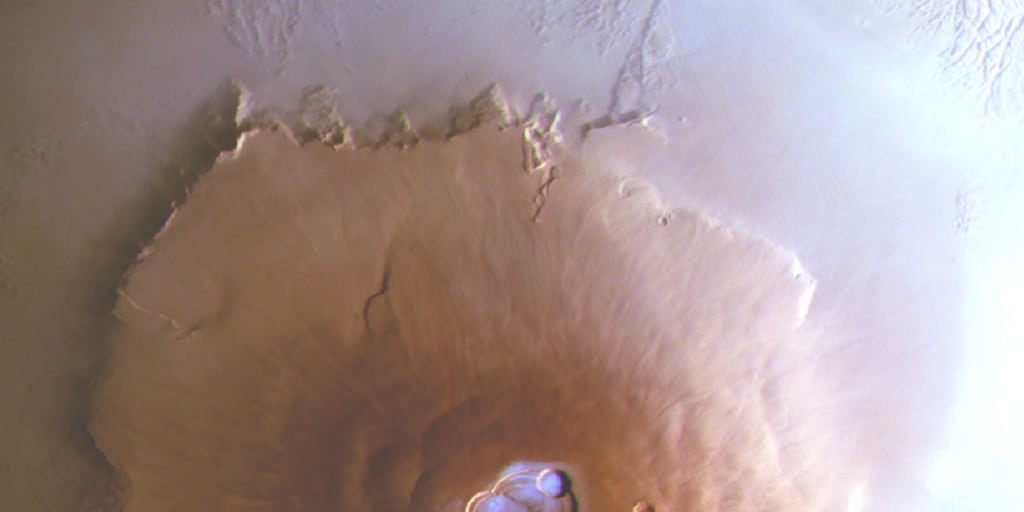It seemed impossible, but there are morning frosts and water at the equator of Mars.

There is no doubt that Mars has many more surprises in store for us. And the latest was the first discovery of water ice near the equator, specifically in the volcanoes of Tharsis, a Martian region where it was thought that … his existence was impossible.
But now it has challenged scientists from the tops of these tall ancient extraterrestrial volcanoes, manifesting itself as frost on the cold mornings of the planet. The discovery, thanks to data from the European Space Agency’s (ESA) ExoMars and Marx Express missions, has just been published in the journal Nature Geoscience and confirms the role of newly discovered atmospheric circulation on these giant volcanoes (among them Mount Olympus, which at 22 km is the tallest mountain throughout the Solar System), the result of the active exchange of water between the Martian surface and the atmosphere.
The Tharsis region is a plateau located in the tropical zone of Mars and is home to some of the largest and tallest volcanoes in our planetary system. Spacecraft orbiting Mars have long observed water ice clouds on this plateau and occasionally measure bursts of atmospheric water just above the volcanoes of the Tharsis plateau. This provided the key to the existence of an active water cycle in the region. However, average surface conditions in the tropics are not conducive to the formation of water frost, and so far no one has been able to directly observe that water actually condenses into ice at such low latitudes.
First images
Led by Adomas Valantinas of Brown University in Rhode Island, the researchers analyzed images taken by ESA’s Trace Gas Orbiter (part of the ExoMars program) and identified deposits of ice both on the summits of the volcanoes and on the ground of the Olympus Mons caldera. According to the data, these deposits appear only in the early Martian mornings and during the coldest times of the year.
A 3D model of Mount Olympus observed by the HRSC camera on board ESA’s Mars Express. You can see the presence of ice at the bottom of the crater.
Adomas Valantinas
Using climate modeling, Valantinas and his colleagues found that the surface temperature was consistent with frost made of water rather than carbon dioxide. This interpretation is also supported by analysis of data from other available spacecraft. In addition, the modeling shows that the atmospheric circulation patterns over the tall Tharsis volcanoes (similar to the microclimates created by high mountains on Earth) could lead to conditions that favor the condensation of frost on the summits and lower slopes.
The study authors estimate that the total mass of frost that could form on the Tharsis volcanoes is about 150,000 tons of water ice, which is likely exchanged daily between the Martian atmosphere and the surface during the planet’s cold seasons. Although this is a small fraction of the total amount of water vapor present in the Martian atmosphere, it may be important to the local surface environment.
3D detail of frost deposits discovered in the caldera of Mount Olympus.
Adomas Valantinas
According to Jesús Martínez Frías, planetary geologist and astrobiologist from IGEO (CSIC-UCM), “this study is new in general and very relevant from a scientific point of view, since it connects aspects related to the water cycle on Mars and” the interaction of the atmosphere, regolith and rocks, which entails aspects not only environmental, but also related to the habitability of the planet.”
According to the researcher, this is “another piece of a complex puzzle designed to unravel the processes currently occurring on the Red Planet.”
